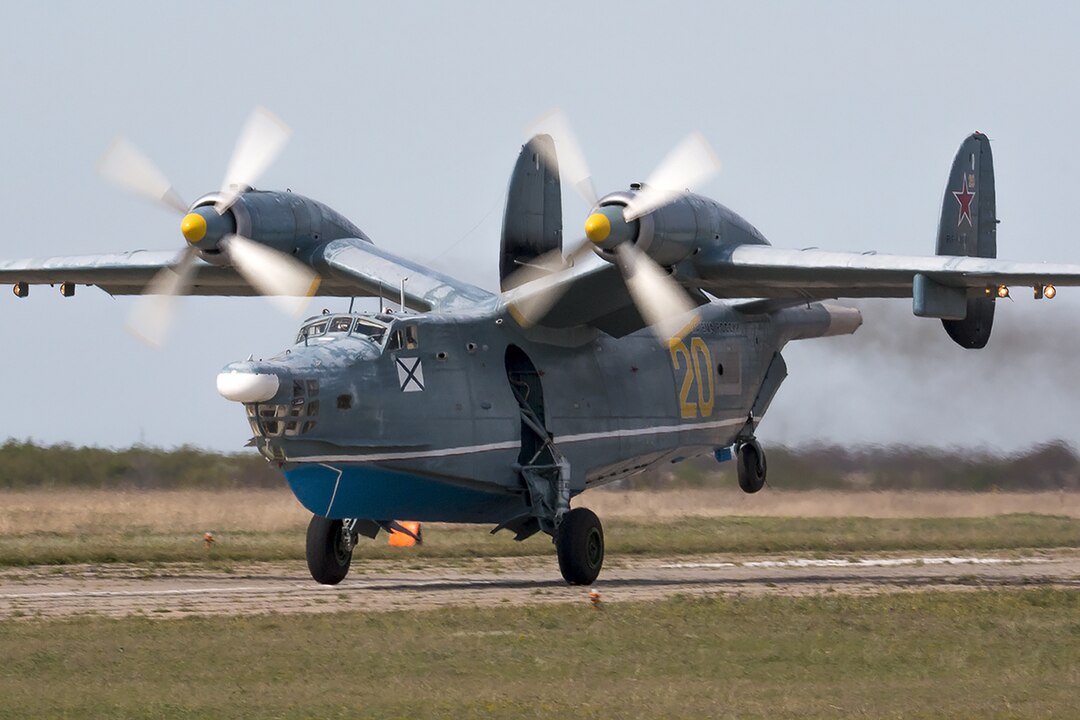With the war in the Black Sea intensifying as Ukraine keeps introducing new kamikaze drone boats, Russia has officially featured the Beriev Be-12 seaplanes for what appears to be air-to-sea bombing roles.
This is nearly two months after the West first reported their use in that water body. The latest publicity videos from the Russian Ministry of Defense show the Kamov Ka-29 naval utility/assault transport helicopter training by firing live rounds on practice targets from its onboard guns.
The employment of aerial platforms for destroying small sea targets is otherwise not inconsistent with Russian practice. It has used Mi-8 helicopters to tackle Ukrainian drone boats, Su-30SM fighters, and Su-24 Fencer strike aircraft to conduct strafing runs on speed boats.
However, using larger capital weapons for smaller and cheaper unmanned surface vessels (USV) represents a specific ‘asymmetry’ in the scenario and a disadvantageous cost-to-benefit ratio for Moscow.
Russia’s strategic position remains strong, and the Black Sea Fleet (BSF) remains intact, with only a few vessels damaged and the rest of the larger warships safe in Novorossiysk harbor. Nevertheless, Ukraine has successfully upset its tactical calculus by forcing it to commit larger platforms to fight smaller, simpler weapons, representing an overkill.
At the same time, it can also be argued that Ukraine virtually has no navy of its own, with only a handful of large patrol boats, freeing up Russia’s larger naval weapons to take care of the suicide USVs. The situation would have been significantly different if Ukraine possessed a working navy alongside its sea drone fleet.
RuMoD Video
A publicity video released by the RuMoD showed a Be-12 dropping what looked like depth charges. RuMoD says they are used to “patrol” Black Sea waters, which presumably involves the amphibious plane destroying sea mines and the Ka-29 co-axial rotor firing its manned PKM/PKT machine gun and twin-barreled guns on the weapons stub firing at mock targets.

The video shows the Be-12 taxing for take-off before briefing on the ground and then, while over the sea, opening its bomb bay doors, showing two columns of depth charges/bombs in rows of two. It releases between eight to nine pairs (16 to 19 bombs), with the explosions seen briefly in the water before the doors close.
“In the course of the combat mission, pilots of the Black Sea Naval Aviation and Air Defence Joint Regiment searched for AFU uncrewed surface vehicles and speedboats at ultra-low and standard altitudes, as well as sea mines endangering civilian navigation,” RuMoD said. The exercise aimed to “improve practical skills in eliminating sea high-speed and small-size targets.”
Towards this end, “the pilots of the Be-12 amphibious aircraft bombed a target, and the Ka-29 helicopter crews underwent large-caliber machine gun live fires at a moving sea target.” The Ka-29, meanwhile, is carrying a 7.62 mm PK machine on the door and two pods of twin-barreled guns on each outboard weapons stub. Both sets of weapons are firing into the water at a practice target.
Be-12 Dropping Bombs To Destroy Drone Boats Or Mines?
It is not clear if the Be-12 dropped the bombs to destroy mines or practice dropping them on USVs, but the RuMoD information appears to be poorly framed in this regard. An inference based on the size of the weapon and the nature of the threat (kamikaze drone boats), it seems unusual that they would be attempted to be destroyed by large drop bombs.
Both Russia and Ukraine accuse the other of mining the Black Sea, and it is possible the Be-12 could be used to explode those mines while also serving as a maritime reconnaissance and patrol aircraft. Be-12 crews would be connected to other BSF air and naval assets, updating them on any USV movements.
With the war in the Black Sea intensifying as Ukraine keeps introducing new kamikaze drone boats, Russia has officially featured the Beriev Be-12 seaplanes for what appears to be air-to-sea bombing roles. pic.twitter.com/Uon6qpKvvC
— EurAsian Times (@THEEURASIATIMES) December 31, 2023
An October 2 update by the British MoD said Russian naval aviation “emphasizes maritime air patrol operations, highly likely with the early identification of uncrewed surface vessels.”
“A key Russian asset in these operations is the Be-12 amphibious aircraft, designed in the 1950s, flying out of bases in occupied Crimea,” it added. Be-12s have been captured operating in the area before but have been featured in official RuMoD publicity material for the first time.
- The author can be reached at satamp@gmail.com
- Follow EurAsian Times on Google News




